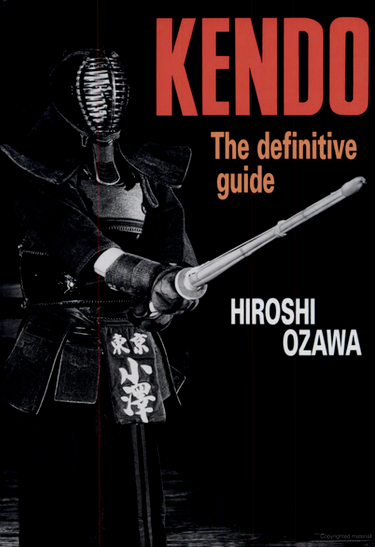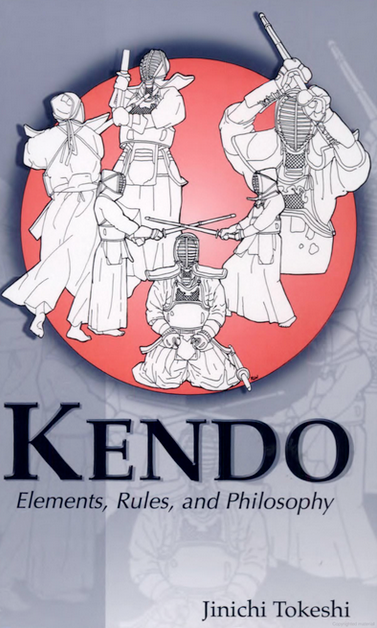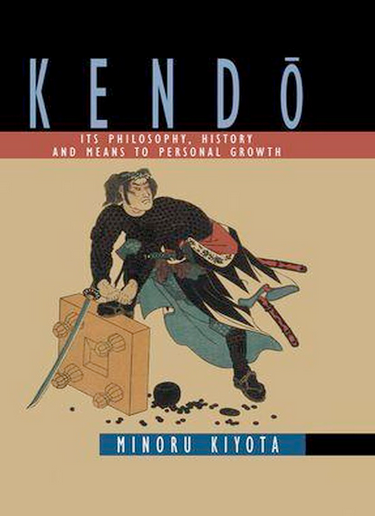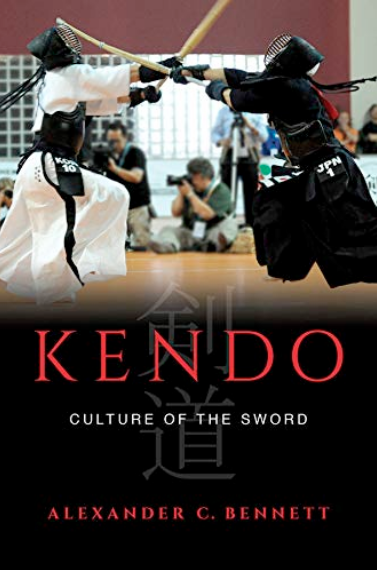From the library of a kendoka

In my piece “Combined motivations in kendo and iaido” (Zanshin, 2020-3), I wrote that when I searched for my “why” in kendo, I found that I wish to learn (about) kendo for three reasons. One: I desire to gain a better understanding of Japanese sword culture and history. Two: I aim to become better at kendo and enjoy this practise. Three: I want to understand and remember kendo jargon and related Japanese terms in order to pass the theoretical part of my first Dan exam. In this blog post, I shall discuss some books that help me to grow as a kendoka.
These books are specifically about kendo, a list of books on other martial arts can be found here.
My favourite book about queries in the first category remains The Book of Five Rings, by Miyamoto Musashi kensei, who is also a great example for me in the fine arts (sumi-e, calligraphy and self-portrayal). As for my second and third wish, luckily, I found that there are a plethora of books and manuals published to aid people like me in meeting these needs.
Various inspiring kendo practitioners have poured their wisdom, knowledge and experiences in books with the intention of making kendo training, philosophy and history more effective and accessible to learners. Thanks to the present-day technologies, many of these books are now also available online. In the next section, “from the library of a kendoka”, you’ll find a small bibliography containing five interesting books on kendo. This selection is rather random, often based on availability and price, but I learnt something new from each of them. Other honorable mentions include; Teikoku Kendo Kyohon (The Kendo Textbook of Imperial Japan) by Ogawa Kinnosuke, (Self-published, 2015), Kendo Tokukon (The Kendo Reader) by Noma Hisashi (Self-published, 2013), and This is Kendo: The Art of Japanese Fencing by Junzo Sasamori and Gordon Warner (Tuttle Publishing, 2012). Should your favourite kendo book be missing from this list, please do not hesitate to inform me about it.
 Kendo: The Definitive Guide, by Hiroshi Ozawa
Kendo: The Definitive Guide, by Hiroshi OzawaKodansha International, 1997 | This “definitive guide” does justice to the subject of kendo by providing a comprehensive and practical approach to kendo for non-Japanese kendoka. Notably, the book contains a section on the history and development of this martial art. There is a detailed beginner’s introduction containing basic information from purchasing, wearing and maintaining essential equipment to competitive engagement. The book goes further to include step by step explanations of fundamental techniques which are illustrated in easy-to-follow line drawings. Ozawa goes further to provide the rules followed during international competitions and equally significant information on kendo clubs outside Japan. On the whole, Ozawa’s book is a comprehensive manual on the art of Kendo. |
 Kendo: Elements, Rules and Philosophy, by Jinichi Tokeshi
Kendo: Elements, Rules and Philosophy, by Jinichi TokeshiUniversity of Hawaii Press, 2003 | This manual comes from an advanced practitioner of kendo with a deep understanding of the art. Tokeshi offers an in-depth study of the history and philosophy of this martial art and sport; a study of basic equipment and a detailed description of form and rules, in the simplest language so as to aid the reader’s understanding. The book is divided into chapters; Evolution, Basic Elements, Form and Rules, Kendo Philosophy and Concepts and Personages. The last chapters of the book contain biographies of the most celebrated kendo practitioners and a history of Kendo in Hawaii. Tokeshi’s book obviously tops other Kendo guides because it is not only a comprehensive manual but it also offers a new perspective to the sport: the author is also a practicing physician hence he pays attention to injury prevention and safety concerns which are often overlooked in other manuals. |
 Kendō: Its Philosophy, History and Means to Personal Growth, by Minoru Kiyota
Kendō: Its Philosophy, History and Means to Personal Growth, by Minoru KiyotaRoutledge, 2013 | This book is a simple yet detailed introduction to the martial art of Kendo. The first chapter is dedicated to defining the art and its concepts including; mushin, kendo, suki and zanshin, dojo, sutemi and ki-ai. The author then delves into the history of kendo; from the development of swordsmanship, the development of the code of the samurai—bushido, and the impact of Buddhist thought on the development of swordsmanship. Lastly, the author examines this martial art in the modern period with specific attention to the integration of martial and liberal arts. Kiyota’s style of writing in this guide is precise and clear thus making the book an elaborate and direct introduction to learners who wish to understand kendo. |
 Kendo: A Comprehensive Guide to Japanese Swordsmanship, by Geoff Salmon
Kendo: A Comprehensive Guide to Japanese Swordsmanship, by Geoff SalmonTuttle Publishing, 2013 | Written with the objective of making your kendo training more effective, like other authors on the subject, Salmon presents a detailed manual on kendo training through detailed instructional sequences demonstrating basic kendo techniques. His intention is to make kendo training accessible to all as well as to dispel misconceptions about the sport. Using a simple and straightforward writing style, this book can be understood by both beginners and martial artists from other disciplines who wish to add kendo to their repertoire. |
 Kendo: Culture of the Sword, by Alexander C. Bennett
Kendo: Culture of the Sword, by Alexander C. BennettUniversity of California Press, 2015 | Alexander C. Bennett provides a detailed historical, cultural and political account of the Japanese martial art of swordsmanship. He explores the humble beginnings of the art, its development and the changing ideologies that fueled this development. Bennett acknowledges that the increasing popularity of the sport does not negate its close links to Japanese sense of collective identity. More importantly, Benett puts kendo in a wider cultural context so as to aid the reader’s comprehension of how modern kendo was formed and the future of the art. Needless to say, this book is highly recommended by teachers of Kendo. |
0 Comments on “From the library of a kendoka”